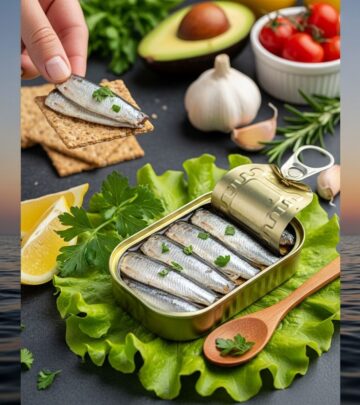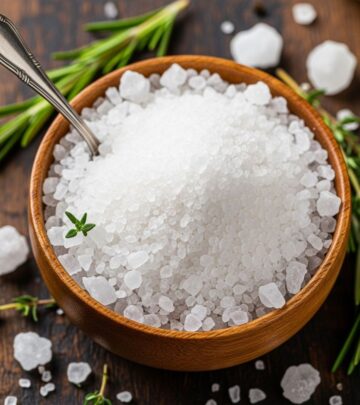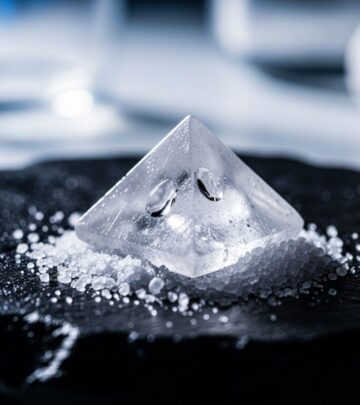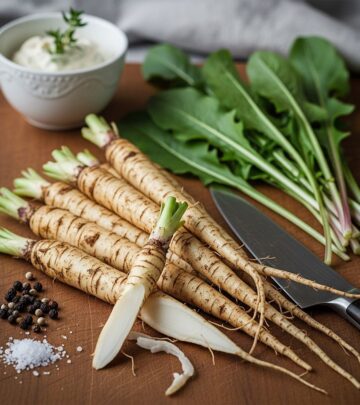What Is Sea Salt? Comprehensive Guide to Its Benefits, Uses, and Taste
Discover how unrefined mineral crystals can transform meals and self-care routines.
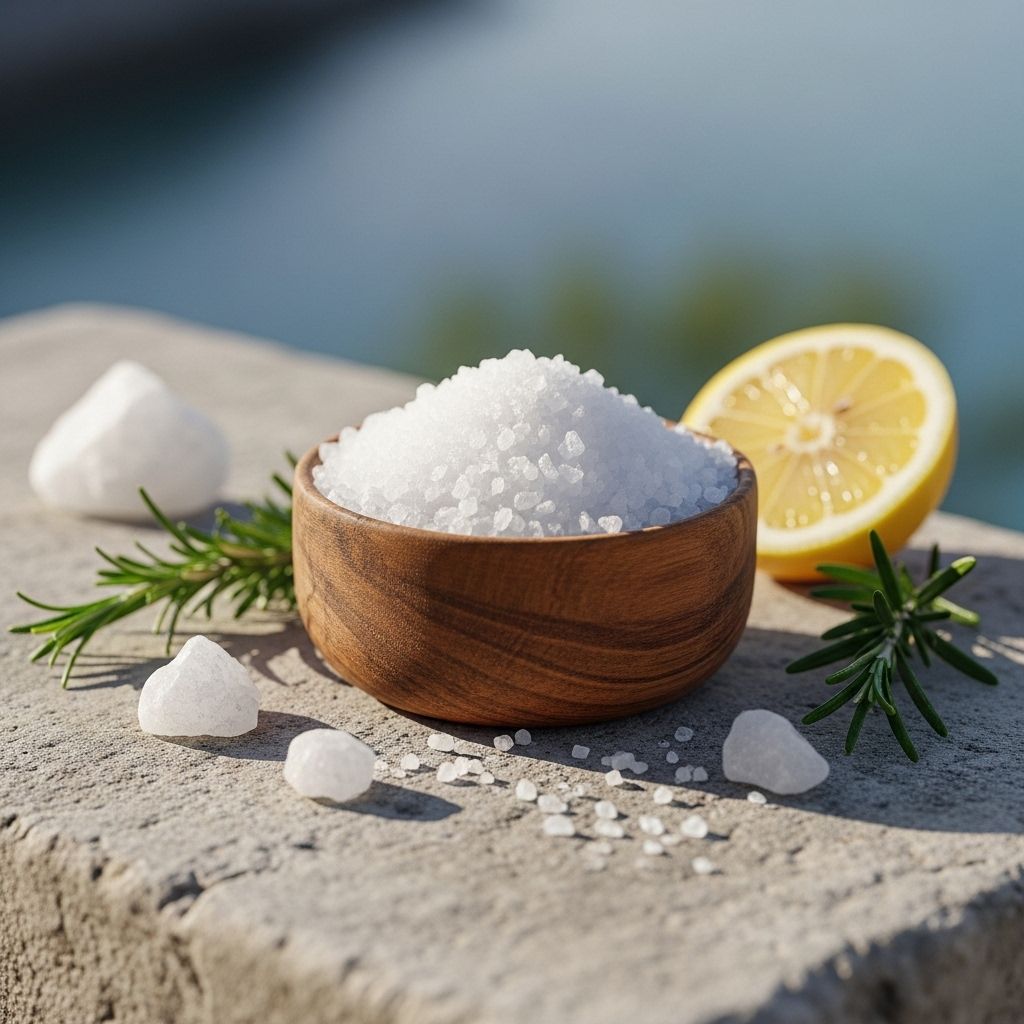
What Is Sea Salt? Benefits, Uses, and Taste
Sea salt is a prized culinary and natural ingredient, known not only for its flavor but also for its historic and versatile role in food preparation, preservation, and even wellness rituals. This comprehensive guide explores how sea salt is made, its composition, comparative benefits and uses, and why its taste has become a staple in kitchens and beyond.
Table of Contents
- What is Sea Salt?
- How Sea Salt Is Made
- Composition and Nutritional Profile
- Sea Salt vs. Table Salt
- Health Benefits of Sea Salt
- Culinary Uses of Sea Salt
- Other Uses of Sea Salt
- Taste and Flavor Profile
- Types of Sea Salt
- Potential Downsides and Considerations
- Frequently Asked Questions (FAQs)
- Conclusion
What is Sea Salt?
Sea salt is a natural mineral derived primarily from the evaporation of seawater. Unlike table salt, which is usually extracted from underground salt deposits and then heavily processed, sea salt tends to retain various trace minerals that contribute to its flavor and visual appeal.
It has been used since prehistoric times, not only as a flavor enhancer but also as a preservative and in beauty regimens. Sea salt is also known as bay salt or solar salt.
How Sea Salt Is Made
The production process involves channeling seawater into shallow ponds, where the sun and wind naturally evaporate the water, leaving crystals of salt behind. Depending on the region and the method employed, this evaporation process can take several months:
- Open-air solar evaporation (slow, traditional method)
- Vacuum evaporation (quicker, more controlled method)
These methods may yield distinct taste profiles and textures, and can even impact the color of the final product, depending on the minerals left behind in the crystals.
Composition and Nutritional Profile
Sea salt is composed primarily of sodium chloride (NaCl). However, in contrast to highly refined table salt, sea salt may contain up to 22% of other salts, including calcium, magnesium, potassium, and various trace minerals.
The following table presents the typical ion concentration in seawater from which sea salt is harvested:
| Ion | Concentration (mg/l) |
|---|---|
| Chloride | 18,980 |
| Sodium | 10,556 |
| Sulfate | 2,649 |
| Magnesium | 1,262 |
| Calcium | 400 |
| Potassium | 380 |
| Bicarbonate | 140 |
| Bromide | 65 |
| Borate | 26 |
| Strontium | 13 |
| Fluoride | 1 |
| Silicate | 1 |
| Iodide | <1 |
The actual mineral content may vary depending on the origin and manufacturing process. Notably, while these trace minerals do affect flavor and color, they are nutritionally insignificant in the amounts typically consumed.
Sea Salt vs. Table Salt
| Feature | Sea Salt | Table Salt |
|---|---|---|
| Origin | Evaporated seawater | Mined from underground deposits |
| Processing | Minimal; retains trace minerals | Extensive; purified, often contains additives |
| Texture | Coarse to flaky | Fine, uniform grains |
| Color | Varies (white, pink, gray) | White |
| Sodium content per teaspoon | ~2,000 mg (4.2g salt) | ~2,300 mg (6.1g salt) |
| Iodine | Not added | Usually iodized |
Both sea salt and table salt are primarily sodium chloride and provide similar nutritional value. The main differences are in processing, mineral content, and flavor. Table salt usually contains added iodine, which is crucial for thyroid health; sea salt generally does not.
Health Benefits of Sea Salt
Sea salt is sometimes marketed as being healthier than table salt. While it is less processed and contains trace minerals, these differences are not significant enough to confer major health advantages when used in typical culinary amounts.
- Natural trace minerals: Small quantities of magnesium, potassium, and calcium may enhance its flavor and provide minimal nutritional value.
- Lower sodium per teaspoon: The larger crystals mean fewer granules per teaspoon, resulting in slightly less sodium — but the difference is negligible unless measured carefully.
- Pleasant variety: The diversity of mineral content and textures can make food more enjoyable, potentially aiding in flavor satisfaction and mindful eating.
Some specialty sea salts, such as Himalayan pink salt, have been attributed with unique benefits, including:
- Regulation of body fluids and pH balance
- Support for bone and respiratory health
- Possible assistance with muscle cramps and vascular health
However, scientific evidence supporting these claims is limited and more rigorous studies are needed.
Culinary Uses of Sea Salt
Sea salt is cherished in the culinary world not just as a seasoning, but also for its ability to enhance texture and presentation.
- Finishing salt: Sprinkled over cooked dishes for a burst of flavor and a pleasing crunch.
- Baking & grilling: Coarse crystals add a satisfying bite to bread crusts or grilled meats.
- Preservation: Historically used to cure meats, fish, and some vegetables due to its moisture-drawing properties.
- Pickling and fermenting: Used for brining in food preservation and flavor concentration.
Popular Dishes Featuring Sea Salt
- Salted caramels and chocolates (where crunchy salt crystals complement sweetness)
- Artisan breads with sea salt crusts
- Fresh tomato salads or grilled vegetables finished with flaky sea salt
Chefs often choose sea salt types by their crystal size and structure for specific recipes, as these can affect both flavor delivery and mouthfeel.
Other Uses of Sea Salt
Beyond cooking and preservation, sea salt is valued in wellness and personal care routines:
- Cosmetic exfoliation: Used in scrubs to remove dead skin and promote circulation.
- Bath soaks: Dissolved in water for relaxation and potential skin benefits.
- Oral care: Sometimes used in homemade mouth rinses for a natural cleansing effect.
Taste and Flavor Profile
The taste of sea salt is often described as clean, bright, and more complex than table salt due to its trace minerals. The flavor can differ notably depending on its origin:
- Mineral content: Variations in calcium, magnesium, and potassium contribute subtly to taste.
- Texture: Flakiness or coarseness enhances sensory experience and flavor release.
- Source: Sea salts from Brittany, Hawaii, and the Mediterranean each offer unique profiles, sometimes with regional notes.
However, in practical use, the flavor differences, though perceptible in finishing applications, are less pronounced once the salt is dissolved in cooking.
Types of Sea Salt
Sea salt comes in an array of varieties, each with distinctive characteristics and uses. Here are some noteworthy types:
- Flaky Sea Salt: Thin, crisp flakes ideal as a finishing salt.
- Extra-Coarse Sea Salt: Large crystals, suitable for salt mills and crusts.
- Fleur de Sel: Delicate French salt harvested from the surface of evaporating salt ponds.
- Himalayan Pink Salt: Sourced from ancient sea deposits, pink in color and rich in mineral content.
- Hawaiian Sea Salt: Sometimes infused with volcanic clay or charcoal for distinct color and flavor.
- Smoked Sea Salt: Cold-smoked over various woods for a deep, smoky aroma and taste.
Each sea salt type brings its unique blend of mineral notes, color, and texture to the table, making them popular among chefs and food enthusiasts alike.
Potential Downsides and Considerations
- Sodium content: All salts, including sea salt, contribute to sodium intake. Excess sodium is linked to high blood pressure and cardiovascular risk.
- Iodine deficiency: Because sea salt is not typically iodized, exclusive use without compensating iodine in the diet may risk deficiency.
- Overconsumption: Belief that sea salt is healthier may cause overuse, leading to excess sodium intake despite similar sodium content to table salt.
- Impurities: Lower-quality or unrefined sea salts may contain natural contaminants, though most commercial products are rigorously tested.
Frequently Asked Questions (FAQs)
Is sea salt healthier than table salt?
No, in terms of sodium content and general health impact, both are essentially the same. The trace minerals in sea salt are not present in quantities to make a significant health difference.
Does sea salt contain iodine?
Most sea salts do not contain added iodine, unlike iodized table salt. Be aware of dietary sources of iodine if using sea salt exclusively.
Can I substitute sea salt for table salt in recipes?
Yes, but due to the larger crystals, measure by weight or adjust volumes. Sea salt may taste less salty by volume due to fewer crystals fitting into a teaspoon.
Which type of sea salt is best for finishing dishes?
Flaky sea salts like Maldon or fleur de sel are favored for finishing due to their crisp texture and subtle minerality.
Are there any risks in using sea salt?
Only risks associated with general excessive salt intake— including high blood pressure and cardiovascular risk. Also, lack of iodine if dietary intake is insufficient.
Conclusion
Sea salt is a flavorful, natural salt harvested by evaporating seawater, cherished for its subtle mineral nuances, visual appeal, and diverse culinary uses. While often considered superior to table salt for its flavor and minimal processing, both salts are similar in nutritional value and sodium content. Enjoy sea salt to enhance your cooking, but remain mindful of total sodium intake and dietary iodine needs.
References
- https://en.wikipedia.org/wiki/Sea_salt
- https://bremeringredients.com/sea-salt-table-salt-differences/
- https://www.healthline.com/nutrition/sea-salt-benefits
- https://draxe.com/nutrition/sea-salt/
- https://www.cookinghub.com/food-ingredient/types-of-sea-salt/
- https://www.mcgill.ca/oss/article/did-you-know-nutrition/under-microscope-sea-salt-vs-table-salt
- https://pubchem.ncbi.nlm.nih.gov/compound/Sodium-Chloride
Read full bio of medha deb



